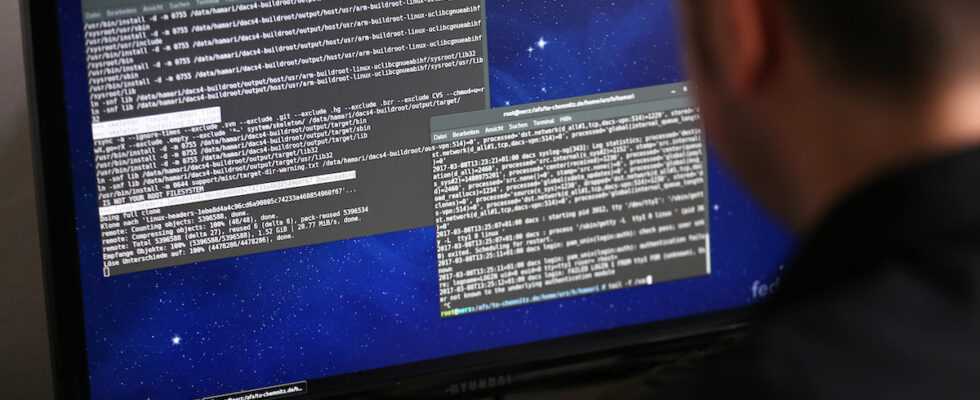Fedora is a free and open source operating system based on a Linux kernel. You can install it on any PC instead of Windows or in dual boot to have both systems.
- Downloads: 36
- Release date : 05/10/2022
- Author : Fedora Project
- Licence : Free software
- Categories:
Operating system - Operating system : linux
For a long time, Fedora was a distribution reserved for those with extensive Linux experience. It was a state-of-the-art operating system: it also came with all the latest software. This is enough to make it tricky for new users, as things tend to break.
But over the years, Fedora has become more democratic. With the release of Fedora 36, it’s even time to label the distro for what it’s become: an exceptional operating system, whether you’ve used Linux before or not.
But why would you want to switch to Fedora? Several possibilities :
- You are tired of Windows crashes.
- Random Windows updates have been systematically wasting your valuable time and work.
- Your computer is not compatible with Windows 11.
- You need more security from your operating system.
- You want your operating system to behave the way you want it to, not the way a company has forced you to use it.
- Chromebooks aren’t flexible and powerful enough.
- Apple hardware is too expensive.
What makes Fedora 36 so good?
Whatever your reason, you’re probably looking for a product that doesn’t suffer from the issues mentioned above. If so, you have many options. With the launch of Fedora 36, there is one more option that should be pre-selected among the operating systems ready for new users.
You’re probably wondering why, out of nowhere, Fedora 36 is now competing with systems like Ubuntu Linux, Linux Mint, and ZorinOS? Part of the answer lies in GNOME 42. This iteration of the desktop environment takes all the amazing new features found in GNOME 40/41 and tweaks them to perfection. The horizontal workflow makes it possible to accomplish tasks with amazing ease.
But instead of going through the list of all the new features in GNOME 42, I want to show how the desktop helps make Fedora 36 so easy to use. Let’s look at how you can share folders with other computers on your network. Fedora and GNOME now make this incredibly simple. Here’s what you need to do:
- open the settings;
- go in Share ;
- click the On/Off slider until it is in the On position;
- click on File sharing then on the cursor to activate it in the new window.
Once you’ve taken care of the above, the Public folder in your home directory – i.e. /home/USER/Public (where USER is your Linux username) – will appear on the network as an available share. The new File Sharing feature is a great example of how Fedora 36 takes care to make sure everything works. And since it ships with Linux kernel 5.17, your newer hardware should be automatically recognized without issue.
Full Features
There was a time when this mantra was relegated to distros like Ubuntu. The fact that Fedora has finally reached this pinnacle of “everything works” is a testament to the hard work the Fedora team has done for the platform. I’ve installed Fedora 36 several times and haven’t had a single problem yet. And given that this version is still in beta, that’s saying something.
For those who prefer to know what’s new and improved in their distributions, here is the list of what’s new in Fedora 36:
- Wayland is the default X server for those using the proprietary NVIDIA driver.
- Noto fonts are used as default system fonts.
- RPM databases are moved from /usr to /var.
- The directory /var is now on its own Btrfs subvolume (for Silverblue and Kinoite installations).
- Old support for network configuration files in NetworkManager has been removed.
- CC 12.
- GNU C 2.35 library.
- LLVM 14.
- OpenSSL 3.0.
- Autoconf 2.71.
- Ruby 3.1.
- Rubygem Cucumber 7.1.0.
- Ruby on Rails 7.0.
- Golang 1.18.
- OpenJDK 17.
- libfi 3.4.
- OpenLDAP 2.6.1.
- Ansible 5.
- Django 4.0.
- PHP 8.1.
- PostgreSQL 14.
- Podman 4.0.
- MLT 7.4.
- Stratis 3.0.0.
One oddity
With the release of GNOME 42, two long-standing applications have been replaced: Gedit and Gnome Terminal. Although Fedora 36 benefits from Gedit’s replacement, Text Editor, it strangely does not include the new Terminal application. Hopefully the Fedora developers will make sure to include the new Terminal app, as it’s a much cleaner and simpler app that fits better with the new look and feel of GNOME.
That one quirk aside, everything about Fedora 36 is sublime. Apps open amazingly fast, look great, and behave exactly as expected. If you’re looking for a new operating system, one that won’t let you down, it would be a shame not to consider Fedora 36 as a prime candidate.
Fedora is a free and open source operating system based on a Linux kernel. You can install it on any PC instead of Windows or in dual boot to have both systems.
- Downloads: 36
- Release date : 05/10/2022
- Author : Fedora Project
- Licence : Free software
- Categories:
Operating system - Operating system : linux
Source: ZDNet.com
